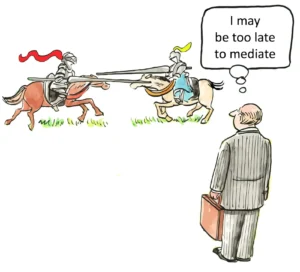Green Card Application: Step-by-Step Legal Guide
The green card application process is a critical pathway for individuals seeking permanent residency in the United States. This comprehensive legal guide examines the intricate steps involved in obtaining a green card, exploring the various eligibility categories, required documentation, and potential challenges applicants may face. Understanding the nuances of this process is essential for those navigating the complex landscape of U.S. immigration law.
At its core, a green card, officially known as a Permanent Resident Card, grants its holder the right to live and work permanently in the United States. The journey to obtaining this coveted status involves a series of carefully orchestrated steps, each requiring meticulous attention to detail and adherence to strict legal requirements. Whether pursuing a green card through family sponsorship, employment, or other specialized programs, applicants must be prepared for a process that can be both lengthy and complex.
The first crucial step in the green card application process is determining eligibility. The United States Citizenship and Immigration Services (USCIS) recognizes several categories under which an individual may qualify for a green card. These include family-based immigration, employment-based immigration, diversity visa program, and humanitarian programs such as asylum or refugee status. Each category has its own set of requirements and procedures, making it essential for applicants to carefully assess their situation and choose the most appropriate path.
For family-based green card applications, the process typically begins with a U.S. citizen or lawful permanent resident filing Form I-130, Petition for Alien Relative, on behalf of the intending immigrant. This form establishes the qualifying relationship between the petitioner and the beneficiary. The complexity of this step varies depending on the specific family relationship and the immigration status of the petitioner. Immediate relatives of U.S. citizens, such as spouses, unmarried children under 21, and parents of U.S. citizens over 21, generally face shorter wait times and fewer restrictions compared to other family preference categories.
Employment-based green card applications, on the other hand, often involve a more intricate process. Most employment categories require the prospective employer to first obtain a labor certification from the Department of Labor, confirming that there are no qualified U.S. workers available for the position. Once this certification is secured, the employer files Form I-140, Immigrant Petition for Alien Worker, with USCIS. This petition must demonstrate that the foreign worker meets the qualifications for the specific employment category and that the employer has the ability to pay the offered wage.
The diversity visa program, also known as the green card lottery, offers a unique pathway to permanent residency for individuals from countries with historically low rates of immigration to the United States. This program, mandated by Congress, makes 50,000 immigrant visas available annually to randomly selected applicants who meet strict eligibility requirements. While the odds of selection are relatively low, the diversity visa program represents an important avenue for individuals who may not qualify under family or employment-based categories.
Once eligibility is established and the appropriate petition is filed, the next critical phase in the green card application process is the adjustment of status or consular processing. Adjustment of status is available to applicants who are already present in the United States and meet certain criteria, allowing them to apply for a green card without leaving the country. This process involves filing Form I-485, Application to Register Permanent Residence or Adjust Status, along with supporting documentation and the required fees.
Consular processing, on the other hand, is the path for applicants who are outside the United States or who do not qualify for adjustment of status. This process involves applying for an immigrant visa at a U.S. embassy or consulate in their home country. After the initial petition is approved by USCIS, the case is transferred to the National Visa Center (NVC) for pre-processing before being sent to the appropriate consular post for an interview and final decision.
A critical aspect of both adjustment of status and consular processing is the submission of comprehensive supporting documentation. This typically includes proof of identity, birth certificates, marriage certificates (if applicable), police clearances, and medical examination results. Employment-based applicants must also provide evidence of their qualifications and job offer. The thoroughness and accuracy of this documentation can significantly impact the success of the application.
One of the most challenging aspects of the green card application process for many applicants is the often lengthy waiting periods involved. Due to annual numerical limitations on certain categories of green cards, particularly in the family preference and some employment-based categories, applicants may face significant backlogs. The Department of State publishes a monthly Visa Bulletin that indicates which priority dates are currently being processed, allowing applicants to estimate their wait times.
The concept of priority date is crucial in understanding these wait times. For family-based and employment-based categories subject to annual limits, the priority date is generally the date on which the initial petition (Form I-130 or Form I-140) was filed with USCIS. As visa numbers become available, applicants with earlier priority dates are processed first. This system can result in wait times of several years or even decades for certain categories, particularly for applicants from countries with high rates of immigration to the United States, such as China, India, Mexico, and the Philippines.
Another critical consideration in the green card application process is the public charge rule. This rule requires applicants to demonstrate that they are not likely to become primarily dependent on government assistance. While the specific implementation of this rule has been subject to policy changes and legal challenges, it remains an important factor in the adjudication of green card applications. Applicants must provide evidence of their financial stability, including income, assets, and, in many cases, a financial sponsor who completes Form I-864, Affidavit of Support.
The medical examination is another mandatory step in the green card application process. Applicants must undergo a medical examination by a USCIS-designated civil surgeon (for adjustment of status) or a panel physician (for consular processing). This examination is designed to ensure that the applicant does not have any health conditions that would make them inadmissible to the United States. The results of this examination are documented on Form I-693, Report of Medical Examination and Vaccination Record, which must be submitted as part of the application package.
For many applicants, the green card interview represents the culmination of the application process. This interview, conducted by a USCIS officer for adjustment of status cases or a consular officer for those processing abroad, is an opportunity for the government to verify the information provided in the application and assess the applicant’s eligibility for permanent residency. The interview can cover a wide range of topics, including the applicant’s background, the basis for their eligibility, and their intentions in the United States. Proper preparation for this interview is crucial, as it can significantly impact the final decision on the application.
It is important to note that the green card application process is not without its potential pitfalls and challenges. Common issues that can complicate or delay an application include incomplete or inaccurate forms, missing or insufficient supporting documentation, failure to maintain lawful status (for those applying through adjustment of status), and criminal history or immigration violations. Additionally, changes in personal circumstances, such as divorce or job loss, can impact eligibility and require careful navigation of the legal implications.
The role of legal representation in the green card application process cannot be overstated. While it is possible for individuals to navigate the process on their own, the complexity of immigration law and the potential consequences of errors or omissions make professional guidance invaluable. Immigration attorneys can provide crucial assistance in determining eligibility, preparing and reviewing application materials, addressing potential issues proactively, and representing clients in interactions with USCIS or consular officers.
Recent trends in immigration policy and enforcement have added new layers of complexity to the green card application process. Increased scrutiny of applications, expanded interview requirements, and evolving interpretations of eligibility criteria have made the process more challenging in many respects. Applicants must be prepared for potential delays and requests for additional evidence, which have become more common in recent years.
The impact of technology on the green card application process is another important consideration. USCIS has increasingly moved towards digital platforms for application submission and processing, including the introduction of online filing for certain forms. While these technological advancements can streamline some aspects of the process, they also require applicants to be comfortable with digital systems and aware of potential technical issues that may arise.
For employment-based green card applicants, recent changes to the H-1B visa program and other nonimmigrant work visa categories have added additional complexities to the process. Stricter enforcement of prevailing wage requirements, increased site visits to verify employment conditions, and changes to the H-1B lottery system have all impacted the landscape for employers seeking to sponsor foreign workers for permanent residency.
The intersection of green card applications with other areas of immigration law, such as temporary visas and naturalization, is another important consideration. Many green card applicants are already in the United States on temporary visas, and maintaining lawful status throughout the application process is crucial. Similarly, understanding the path from permanent residency to citizenship is important for those planning their long-term immigration strategy.
Environmental factors, such as global pandemics or geopolitical events, can also significantly impact the green card application process. The COVID-19 pandemic, for example, led to temporary suspensions of certain immigration processes, travel restrictions, and changes in interview procedures. Applicants must be prepared to adapt to such unforeseen circumstances and stay informed about policy changes that may affect their applications.
The role of congressional action in shaping immigration policy and, by extension, the green card application process, cannot be overlooked. Proposed legislation, such as comprehensive immigration reform bills or targeted measures addressing specific visa categories, has the potential to dramatically alter the landscape for green card applicants. Staying informed about legislative developments and their potential impacts is crucial for both applicants and their legal representatives.
In conclusion, the green card application process is a complex and multifaceted journey that requires careful planning, meticulous attention to detail, and often, significant patience. From determining eligibility and choosing the appropriate category to navigating the intricacies of forms, supporting documentation, and interviews, each step presents its own challenges and opportunities. By understanding the legal framework, staying informed about policy changes, and seeking professional guidance when needed, applicants can maximize their chances of success in achieving the goal of permanent residency in the United States.
As the landscape of immigration law continues to evolve, so too will the strategies and best practices for navigating the green card application process. Applicants, legal professionals, and policymakers alike must remain adaptable and informed to ensure that the process continues to serve its intended purpose of welcoming qualified individuals to contribute to the diverse fabric of American society.
- https://www.uscis.gov/green-card
- https://travel.state.gov/content/travel/en/us-visas/immigrate.html
- https://www.dol.gov/agencies/eta/foreign-labor
- https://www.justice.gov/eoir
- https://www.aila.org/
- https://www.migrationpolicy.org/
- https://www.boundless.com/immigration-resources/
- https://www.ilrc.org/
- https://attorneys.media













